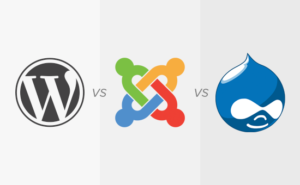As technology continues to advance, we are seeing more and more applications of artificial intelligence (AI) in various industries. In the field of content creation, one such application is ChatGPT – an AI language model developed by OpenAI. ChatGPT is capable of generating human-like text based on prompts provided by the user, and has shown remarkable progress in its ability to create coherent and grammatically correct sentences. But the question remains: can ChatGPT replace human content writers?
Pros of Using ChatGPT for Content Creation
Speed and Efficiency
One of the biggest advantages of using ChatGPT for content creation is its speed and efficiency. With the ability to generate text in a matter of seconds, ChatGPT can produce large volumes of content in a short amount of time. This can be especially useful for businesses that require a high volume of content on a regular basis, such as news websites or e-commerce stores.
Consistency
Another advantage of using ChatGPT is its consistency. Since the model follows a set of rules and algorithms, it can maintain a consistent tone and style throughout the entire document. This is particularly useful for businesses that require a certain level of uniformity in their content, such as legal or financial documents.
Cost-Effective
Using ChatGPT can also be cost-effective in the long run. While the initial investment in AI technology may be expensive, once the system is set up, it can operate autonomously, reducing the need for human writers and lowering labor costs.
Cons of Using ChatGPT for Content Creation
Lack of Creativity
One of the biggest disadvantages of using ChatGPT for content creation is its lack of creativity. While the model is capable of generating coherent sentences and following a set of rules, it does not possess the same level of creativity and intuition as a human writer. This can lead to content that is formulaic and lacks originality.
Quality Control
Another potential issue with using ChatGPT is quality control. While the model may be able to generate text quickly and efficiently, it is not always able to produce content that is accurate or free of errors. This can be a particular concern for businesses that require highly technical or specialized content.
Ethical Considerations
Finally, there are ethical considerations when it comes to using AI-generated content. While ChatGPT may be able to produce content that is grammatically correct and coherent, it is not capable of understanding cultural nuances or producing content that is sensitive to certain groups or communities. This can lead to issues of bias or insensitivity in the content that is produced.
Conclusion
So, can ChatGPT replace human content writers? The answer is not a simple yes or no. While the technology has advanced significantly in recent years, it still has limitations that prevent it from fully replacing human writers. That being said, ChatGPT can be a valuable tool for businesses looking to streamline their content creation process and produce high volumes of consistent, formulaic content. Ultimately, the decision to use ChatGPT or human content writers will depend on a variety of factors, including the specific needs of the business, the nature of the content being produced, and the ethical considerations involved.
In conclusion, while ChatGPT has its advantages and disadvantages, it is clear that AI technology will continue to play an increasingly important role in the field of content creation. As technology continues to improve and evolve, it will be interesting to see how



